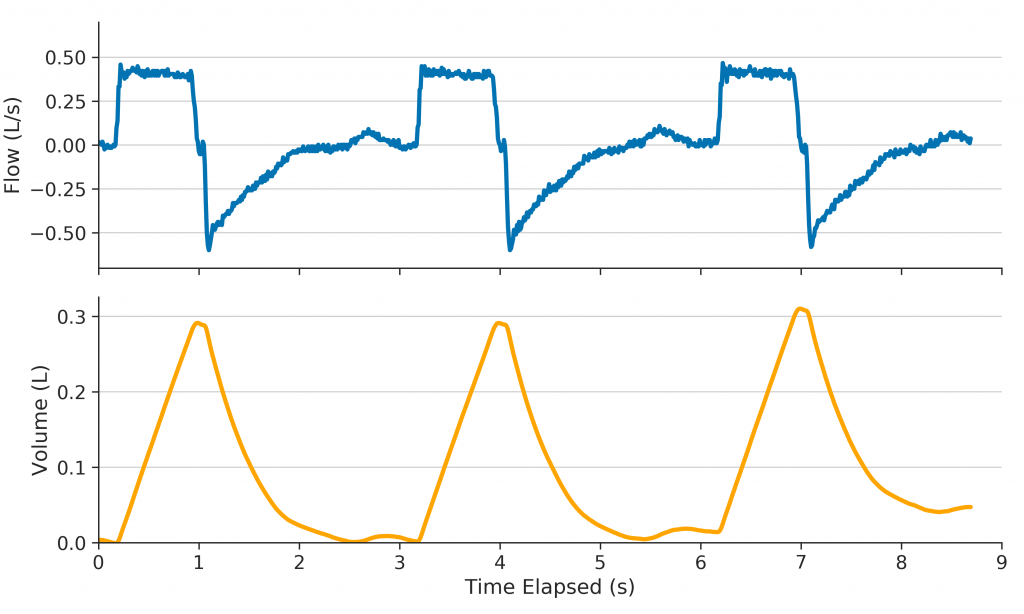Porcine Study #2 was conducted at the same animal facility in the Boston area with a single 27 kg porcine. This was a survival study. The same team was present and the goals of the study were:
- Conduct a functional test of the prototype MIT Emergency Ventilator Unit 002.
- Vary “% tidal volume” control and measure actual tidal volumes in cc. Note: The Emergency Ventilator displays tidal volume as a function of bag compression.
- Compare ventilation of the Emergency Ventilator to that of the Puritan Bennet 840 Ventilator system (2016 model year, Medtronic) graciously loaned to us by a hospital.
- Compare ventilation of the Emergency Ventilator to that of an experienced anesthesiologist manually bagging the manual resuscitator.
Flow-volume loops were collected using the spirometer, described in Bench Testing, with varying tidal volumes between 100cc and 500cc in combination with varying PEEPs of 5, 10, 15 cm H2O. Plateau pressure was kept below 30 cm H2O. (Above this level porcines suffer hemodynamically.)
Expected changes on arterial blood gases were demonstrated with varying minute ventilation using MIT Emergency Ventilator. The blood gases also stabilized for an hour with the same ventilator settings.
An experienced anesthesiologist manually bagging the manual resuscitator and then using the MIT Emergency Ventilator showed very similar flow-volume loops.
The anesthesiologist was able to program in ventilator settings and walk away for an hour at a time and only make slight adjustments when a veterinary technician alerted him of changes in end-tidal CO2 or showed him hourly arterial blood gas results.
Post study the subject was recovered. Three days later post this experiment the porcine was observed to still be healthy and behaving normally.
Volume and Flow Graphs
Puritan Bennet 840 Ventilator
Settings: 300 TV, 20 BMP, I:E 1:2, PEEP 5.
Below we show the volume and flow graphs for a reference instrument (Puritan Bennet 840 Ventilator) and the MIT E-VENT system using a consumer spirometer inline with the breathing circuit of the animal.

After fixing several mechanical and firmware issues after the first day of testing, the MIT E-VENT flow and volume profiles were drastically improved:

The mechanical structure is much more sound and the motor and motor controller no longer have any issue delivering the needed volume of air to the animal.

Recent Comments